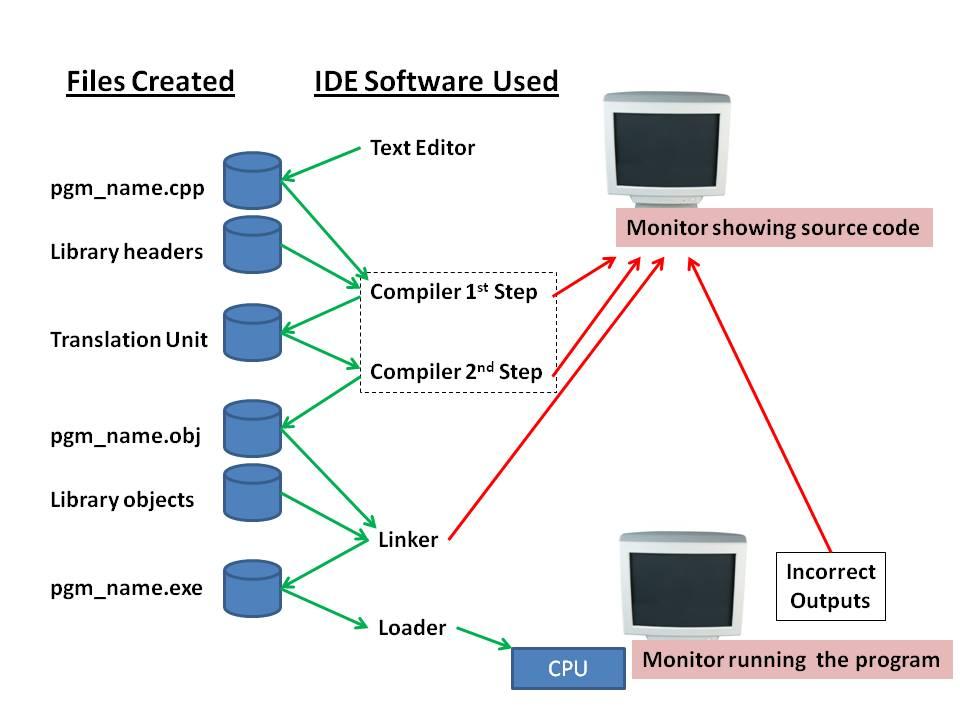Introduction
In the evolving landscape of software development, Integrated Development Environments (IDEs) have emerged as pivotal tools that significantly influence the programming process. An IDE is a comprehensive software suite that provides a range of features and functionalities aimed at simplifying the coding experience. These environments typically encompass source code editors, build automation tools, debuggers, and often support for version control systems and package management. By integrating these essential components into a single platform, IDEs facilitate a more streamlined workflow, enhancing productivity and enabling developers to focus on problem-solving rather than the intricacies of tool management.
This article examines the multifaceted impact of IDEs on programming practices, exploring their role in improving code quality, reducing development time, and enabling collaboration among developers. It will also address potential challenges and limitations associated with IDE usage, providing a balanced perspective on their influence within the broader context of software engineering methodologies. Through this analysis, we aim to elucidate how IDEs not only shape individual developer experiences but also contribute to the dynamics of team-based development, ultimately influencing the trajectory of software engineering as a discipline.
Table of Contents
- The Role of Integrated Development Environments in Enhancing Coding Efficiency
- Evaluating the Effectiveness of Integrated Development Environments in Error Reduction
- Integration of Collaboration Features in Integrated Development Environments
- Best Practices for Selecting and Utilizing Integrated Development Environments in Software Development
- Insights and Conclusions
The Role of Integrated Development Environments in Enhancing Coding Efficiency
Integrated Development Environments (IDEs) serve as comprehensive tools that streamline the coding process, significantly enhancing a developer’s productivity. By offering essential features such as syntax highlighting, code completion, and debugging tools, IDEs create a more efficient workspace that reduces the likelihood of errors and accelerates development time. These environments provide real-time feedback, allowing programmers to identify and rectify mistakes early in the coding process, which not only saves time but also contributes to higher code quality. Furthermore, by integrating version control and collaboration tools, IDEs facilitate teamwork and improve project management capabilities.
Another important aspect of IDEs is their ability to simplify complex tasks through automation and templating. Developers can leverage built-in frameworks and libraries, enabling quick setup of projects without the need for manual configuration. Additionally, IDEs often come with plugin support, allowing users to customize their environment according to their specific needs or preferences. This adaptability fosters an enhanced coding experience by providing tailored features that can further optimize performance. the multifaceted tools and utilities provided by IDEs are pivotal in transforming programming from a labor-intensive process into a more streamlined and enjoyable activity.
Evaluating the Effectiveness of Integrated Development Environments in Error Reduction
The integration of sophisticated features within Integrated Development Environments (IDEs) serves as a critical mechanism for minimizing programming errors. These tools offer comprehensive support through various functionalities including syntax highlighting, auto-completion, and real-time error detection. This immediate feedback loop allows developers to identify mistakes as they write code, effectively reducing the likelihood of bugs. A study conducted on the usage of IDEs across numerous programming languages has shown that productivity increases when users leverage features that assist in error detection. Some key capabilities of IDEs that contribute to error reduction include:
- Code linting: Automatically identifies syntax errors.
- Debugging tools: Provides step-by-step execution monitoring.
- Version control integration: Helps track changes and avoid conflicts.
- Documentation access: Facilitates quick reference to language functions and libraries.
In comparing traditional programming methods with IDE-supported environments, developers using IDEs report fewer issues in code quality and maintenance. An internal survey revealed that developers found IDEs significantly streamlined their programming tasks. Below is a brief overview of developer feedback regarding the effectiveness of IDE features:
| Feature | Impact on Error Reduction | Developer Feedback |
|---|---|---|
| Real-time error detection | High | “Eliminates minor issues quickly.” |
| Code suggestions | Medium | “Enhances coding speed.” |
| Integrated debugging | High | “Improves understanding of code flow.” |
Integration of Collaboration Features in Integrated Development Environments
In recent years, integrated development environments (IDEs) have evolved to include collaboration features that significantly enhance developers’ workflows. These tools enable programmers to work together in real-time, break down geographical barriers, and increase productivity through shared environments. Some of the key collaboration features facilitating this transition include:
- Real-time editing: Multiple users can edit the same codebase simultaneously, seeing changes instantly.
- Integrated chat: Communication tools built directly into the IDE streamline discussions without switching between applications.
- Version control systems: Simplified integration with platforms like Git allows for seamless updates and tracking changes collectively.
These collaboration-enhancing functionalities provide more than just convenience; they foster a culture of teamwork and mutual learning among developers. A recent survey showed that teams leveraging collaborative IDEs reported a 25% increase in project completion speed and a 30% reduction in coding errors. The comparison below illustrates the impact of collaboration features on outcomes for development teams:
| Feature | Impact on Team Performance |
|---|---|
| Real-time editing | 25% faster project completion |
| Integrated chat | 30% fewer misunderstandings |
| Version control integration | 40% less time spent on conflict resolution |
Best Practices for Selecting and Utilizing Integrated Development Environments in Software Development
Choosing the right Integrated Development Environment (IDE) is crucial for efficient software development. When evaluating options, consider the following factors to ensure optimal productivity:
- Language Support: Ensure the IDE supports the programming languages you intend to use.
- Customizability: Look for options that allow you to tailor the interface and features to fit your workflow.
- Performance: Assess the IDE’s resource consumption, especially during larger projects.
- Community and Resources: An active community can provide plugins, extensions, and troubleshooting assistance.
- Integration Capabilities: Check whether the IDE can integrate with version control systems, build tools, and other relevant software.
Once an IDE is selected, utilizing it effectively can significantly enhance your programming experience. Start by exploring its built-in features, such as:
- Code Completion: Familiarize yourself with autocomplete features to boost coding speed.
- Debugging Tools: Take full advantage of integrated debugging capabilities to identify issues early.
- Version Control: Integrate version control directly within the IDE to streamline collaboration and code management.
Additionally, consider creating a workspace setup that minimizes distractions and allows for focused work. Custom keybindings and shortcuts can further enhance efficiency, enabling quicker access to frequently used functionalities.
Insights and Conclusions
Integrated Development Environments (IDEs) have significantly reshaped the landscape of programming by enhancing productivity, fostering collaboration, and streamlining the development process. Their robust features—ranging from code completion and debugging tools to version control integration—provide developers with the necessary resources to write, test, and deploy code more efficiently. As the technology ecosystem continues to evolve, it is likely that IDEs will incorporate even more advanced functionalities, such as AI-assisted code suggestions and improved cloud-based collaboration tools, further empowering programmers. Moving forward, the continued evolution of IDEs will be a critical component in driving innovations within the software development lifecycle, ultimately influencing how programming tasks are approached in various domains. Understanding the role of IDEs in shaping programming practices will be essential for both current and future developers navigating this dynamic field.






